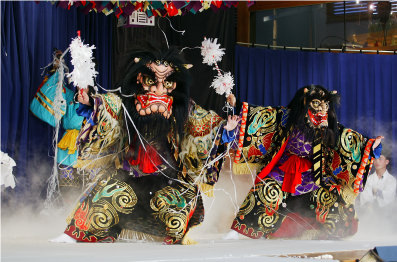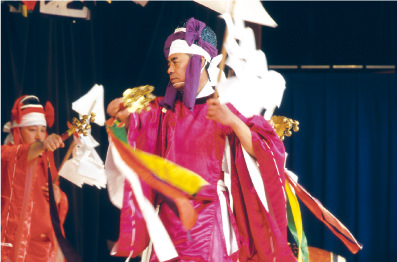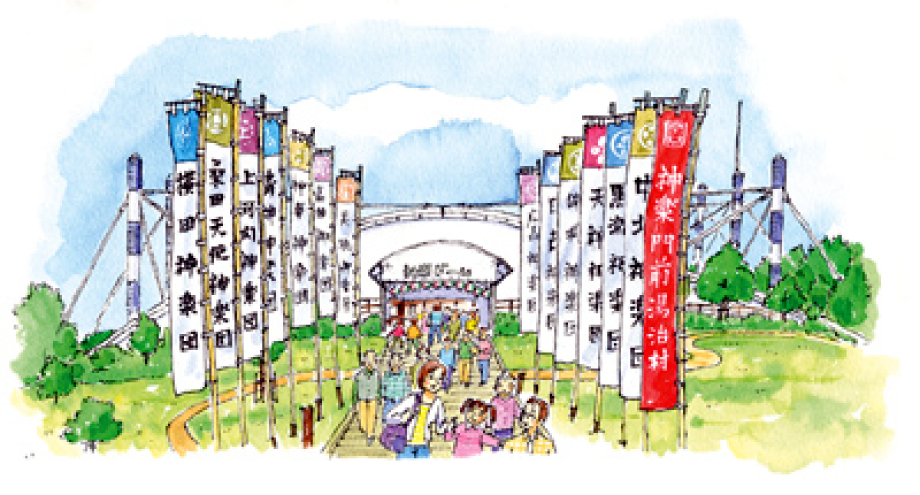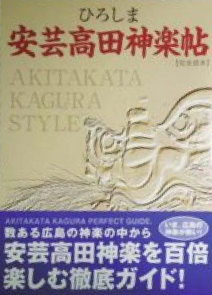- HOME
- Kagura
Kagura
According to one theory, kagura can be traced back to the Legend of Ama no Iwato, a book of Japanese myths compiled at the order of Emperor Tenmu in the 7th century. This legend inspired a ritual for the repose of souls. Held during the time of year when the sun is at its weakest, kagura is said to summon the might of the gods to bring back the sun and bring new life, and to serve as a prayer for a stronger life force in us all.
● Drinking alcohol while watching
● Lying down while watching
● Eating in your seat
● Getting up from your seat
● Talking to your friends
● Calling out to the performers
● Coughing and sneezing
Kagura is very forgiving of things that are considered improper when watching other performing arts. After all, kagura is something to be enjoyed with the gods. The gods are watching with us from the tengai in the Kagura Dome. They are our most honored guests, and they generally pay no mind to what we humans do, for they know that we have many flaws. Call it generosity or call it nonchalance, but this difference from the cultures of noh and kabuki may be part of kagura’s charm. Simply be considerate of others around you – that is all we ask of you.



● Dancing
The mannerisms and words of the characters
The style of dancing
The transformations of characters that change their form, like the princess who turns into a demon
The degree and speed of the synchronizations when multiple dancers move in time with each other
Music
The reverberation, carrying and rhythm of the fue flutes, gongs and large and small taiko drums
The harmony between the music and other elements such as the dancing and words
The overall balance (are the musicians in sync with each other?)
Costumes and masks
The connection that the colors, patterns and shapes have with the story
Story
Kagura stories are quite closely based on real events in history, so if you learn about those events before watching the performance, you’ll find the story even more interesting and easier to follow.
With that said, it’s also fine to just sit back and enjoy the show. When you do that, you look back and realize that that was enjoyable in itself. So don’t worry too much about what you “should” be noticing – just have fun!

- ●¥3,300 per copy (including tax)
● Published March 2013 by the Municipal Government of Akitakata City, Hiroshima Prefecture (general supervision), Akitakata Kagura Council and Kagura Monzen Toji Village.
There are 22 kagura troupes in Akitakata City, each affiliated with a different shrine in a different region. Each troupe leads kagura dancing at their shrine’s annual festivals, with members of the shrine’s sect dancing together.




